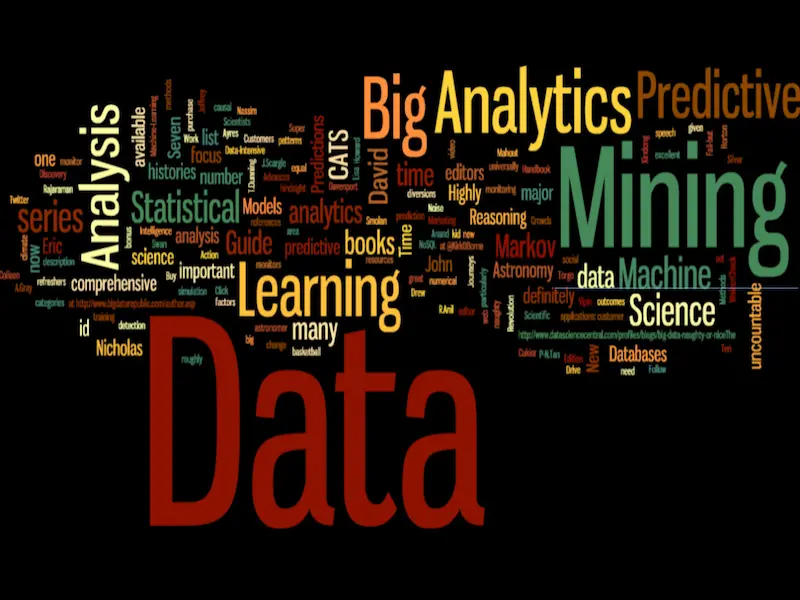- Text data mining is the process of extracting meaningful information and patterns from unstructured text data, enabling organisations to transform raw textual information into actionable insights.
- It employs various techniques such as natural language processing, machine learning, and statistical analysis to preprocess, analyse, and visualise text data, making it easier to identify trends and sentiments.
- Text data mining has applications across multiple industries, including customer sentiment analysis, healthcare research, fraud detection, and legal document review, helping businesses make informed decisions based on textual information.
In an era where vast amounts of text data are generated daily—from social media posts to customer reviews—the ability to extract valuable insights from this unstructured information has become essential for organisations. Text data mining serves as a powerful tool to uncover hidden patterns and sentiments within textual data, enabling businesses to enhance their strategies, improve customer experiences, and drive innovation.
By leveraging advanced techniques like natural language processing and machine learning, organisations can transform raw text into structured insights that inform decision-making across diverse sectors. Understanding the fundamentals of text data mining is crucial for harnessing its potential effectively.
Definition of text data mining
Text data mining involves the extraction of high-quality information and knowledge from text. Unlike structured data, which is organised in databases with predefined formats, unstructured text data can be messy and complex. Text data mining aims to convert this unstructured information into a structured format that can be analysed, interpreted, and utilised effectively.
The process typically encompasses several stages, including data collection, preprocessing, feature extraction, model building, and interpretation. By applying various techniques—such as natural language processing, machine learning, and statistical analysis—text data mining allows organisations to uncover hidden trends, sentiments, and relationships within their textual data..
Also read: What is text data mining?
Also read: The power of data automation: Streamlining efficiency and accuracy
The text data mining process
Data collection: The first step in text data mining is gathering relevant text data from diverse sources such as websites, documents, social media platforms, and customer feedback forms. With the right tools, organisations can collect large volumes of textual information for analysis.
Data preprocessing: Once the data is collected, it undergoes preprocessing to clean and prepare it for analysis. This stage may involve removing stop words, stemming, and normalising text through case conversion and punctuation removal.
Feature extraction: In this phase, important features or attributes are extracted from the processed text. Techniques such as term frequency-inverse document frequency and word embeddings are often employed to represent text data in a numerical format suitable for analysis.
Model building: After feature extraction, machine learning algorithms are applied to identify patterns, classify text, or perform sentiment analysis. Depending on the goals of the analysis, different models, such as supervised or unsupervised learning techniques, may be used.
Interpretation: The final stage involves interpreting the results of the analysis. Visualisation tools and dashboards can help stakeholders understand the findings and make informed decisions based on the mined insights.
Applications of text data mining
Text data mining has a wide array of applications across various industries:
Customer sentiment analysis: Organisations frequently use text mining to analyse customer feedback, reviews, and social media conversations. Understanding customer sentiment can guide product development, marketing strategies, and customer service improvement.
Information retrieval: Businesses utilise text mining techniques to enhance search engines and recommendation systems, helping users find relevant articles, products, or services more efficiently.
Healthcare: In the healthcare sector, text mining can analyse clinical notes, research papers, and patient feedback to identify trends in treatment effectiveness, disease outbreaks, and patient satisfaction.
Fraud detection: Financial institutions employ text mining to monitor communication patterns for potential fraudulent activities, enhancing security measures and protecting customers.
Legal document analysis: Law firms use text mining to sift through vast amounts of legal documents, case files, and contracts, enabling them to identify relevant information quickly and efficiently.
Challenges of text data mining
Despite its promising applications, text data mining faces several challenges:
Ambiguity and context: Natural language is inherently ambiguous. Words can have multiple meanings based on context, making it difficult for algorithms to accurately interpret the intended message.
Language variability: The variability in language, including slang, idioms, and dialects, poses a challenge for text mining models, which must be trained to recognise these variations to yield accurate results.
Data quality: The quality of the input text data significantly impacts the mining process. Noisy or poorly structured data can lead to inaccurate insights, emphasising the need for effective preprocessing.
Scalability: As organisations accumulate vast amounts of text data, scalability becomes an issue. Efficient storage, processing, and analysis techniques are vital for handling large datasets.
The future of text data mining
As technology evolves, so too will the methodologies underlying text data mining. Advances in artificial intelligence and machine learning are expected to improve the accuracy and efficiency of text mining processes. Furthermore, the growing emphasis on real-time analytics will likely drive innovations in natural language processing, enabling businesses to gain insights faster than ever before.

